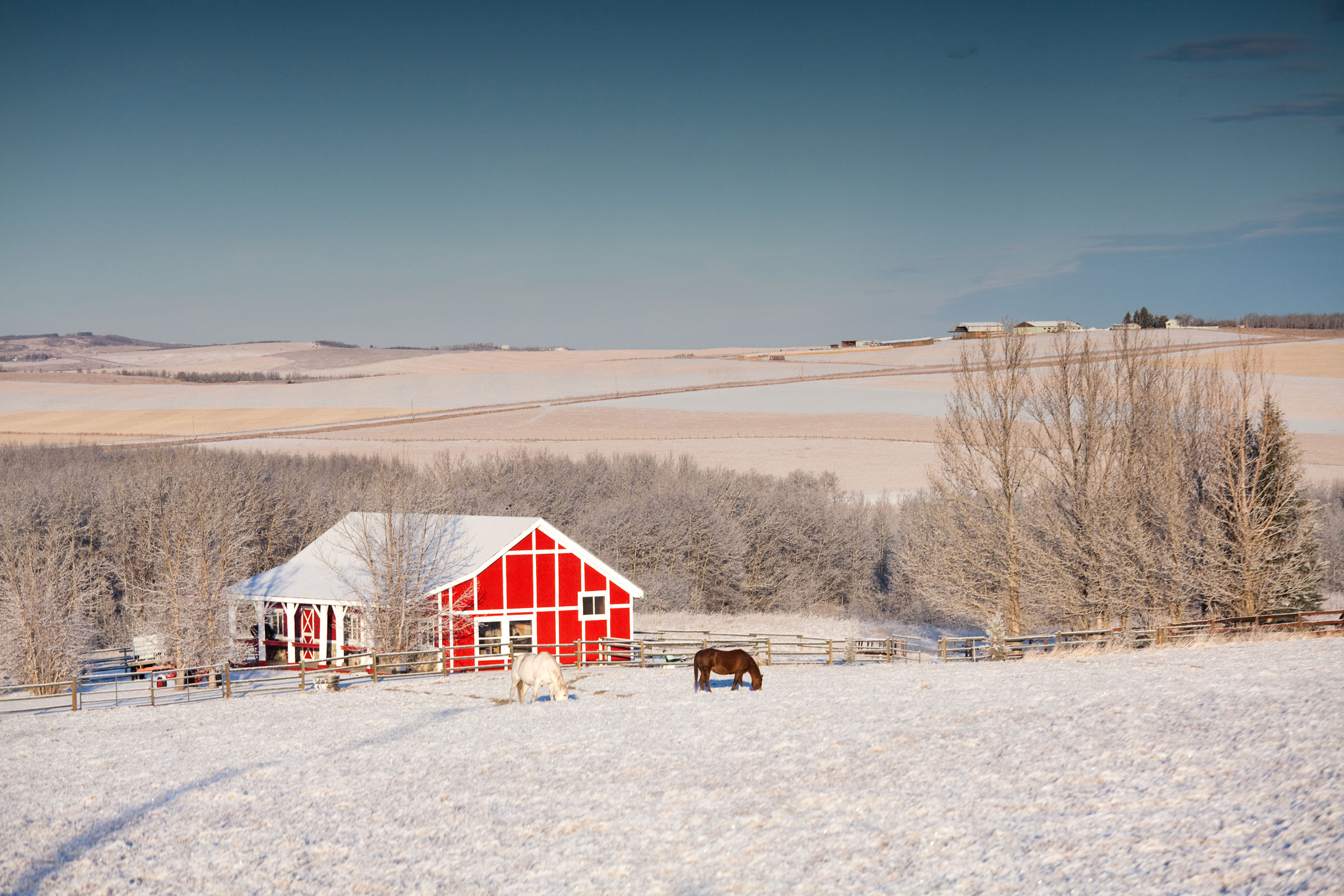
Editor’s note: Animal Arts is an architectural firm specializing in equine, animal and veterinary buildings.
Question to Animal Arts
What is a good balance between insulation and ventilation in a horse barn? You want it to be cozy in winter, but it has to have good ventilation for horse health. Any suggestions or standards?
Answer from Animal Arts
This is a great question and not easy to answer. It depends somewhat on the climate that we’re discussing. To make matters as simple as possible, uninsulated barns don’t always need to be as well-ventilated because they tend to breathe well on their own. Insulated barns always need to be ventilated because they are more tightly sealed.
To give a guideline for whether the barn needs to be insulated, does it remain above 50 degrees on its own during the winter, and does it stay generally cooler than the air outside in summer? If so, then it can probably survive with natural ventilation as a primary ventilation method.
Natural ventilation works like a chimney in a house. Hot air rises and creates a draft. Take advantage of the chimney effect by using continuous or cupola vents on the ridge line of the roof and provide openings low on the wall, such as at the perimeter stalls. Hot, soiled air rises, creating a draft for fresh air to enter. In order for this type of ventilation to work, there must be enough height in the barn and a steeper roof pitch. A 6:12 or greater roof pitch is preferred. Cupolas should be large. Many pre-manufactured buildings have low roof pitches and small cupolas, and therefore do not ventilate properly.
If the barn needs more protection from the elements (i.e., it is located where the inside of the barn readily goes below 50 degrees and/or well above the outside temperature in the summer, then it should be insulated and more actively ventilated. For insulation that does not degrade or come apart, consider using a foam board insulation with reflective barrier on the top surface.
Once you have built your thermos of a building, you’ll need to be sure it is properly vented. Natural ventilation can still be used when it is effective enough, but if odor, humidity or dust builds up inside, it can damage your horses’ lungs and immune systems.
Design the roof peak with an exhaust fan system to supplement natural ventilation, which will be necessary at certain times of the day or year. Design the system to provide at least four air changes per hour or 500 cubic feet per minute per horse, whichever is greater.
For more information from Animal Arts visit AnimalArts.com.


